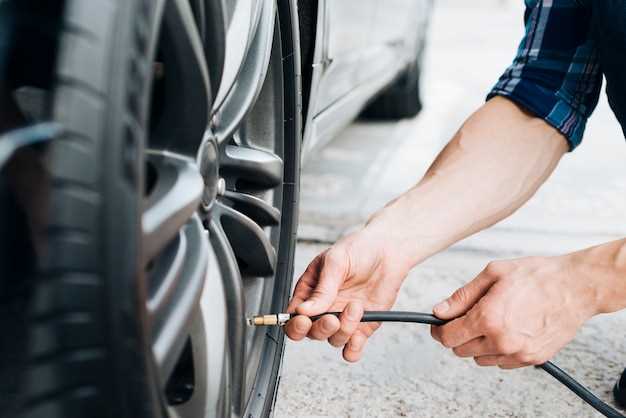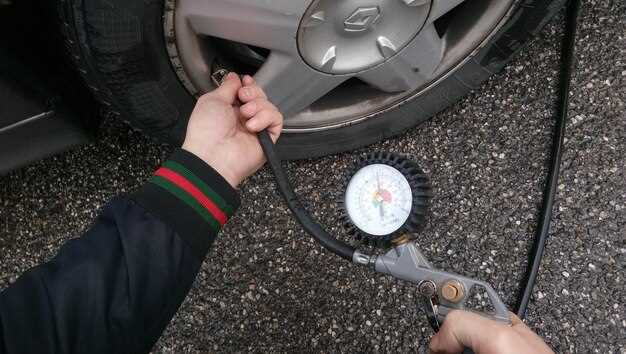
Maintaining the proper pressure in your tires is critical for optimizing handling during cornering. Many drivers underestimate the importance of tire pressure, yet it plays a vital role in how well your vehicle performs when navigating curves. Inadequate or excessive air pressure can lead to uneven tire wear, reduced grip, and ultimately compromised safety.
When tires are properly inflated, they provide better contact with the road surface, enhancing traction and stability. This improved handling allows for sharper turns and reduces the risk of losing control. Conversely, low tire pressure can cause excessive sidewall flex, diminishing performance during high-speed maneuvers, while overinflated tires may lead to a harsh ride and decreased surface contact.
In this article, we will explore practical tips for maintaining optimal tire pressure, helping you achieve the best possible cornering performance. By focusing on regular checks, understanding the manufacturer’s recommendations, and adjusting for different driving conditions, you can significantly enhance your vehicle’s handling and ensure a safer driving experience.
How to Determine the Optimal Tire Pressure for Your Vehicle

To achieve the best handling and performance from your vehicle, it’s crucial to determine the optimal tire pressure. Incorrect pressure can lead to poor cornering, reduced traction, and uneven tire wear. Follow these steps to find the ideal tire pressure for your vehicle.
1. Check the Manufacturer’s Recommendations: Start by locating the manufacturer’s recommended tire pressure, which is usually found on a sticker inside the driver’s side door jamb or in the vehicle’s owner manual. This value represents the optimal pressure for your specific vehicle model and is often given in pounds per square inch (PSI).
2. Use a Reliable Pressure Gauge: Invest in a good-quality tire pressure gauge. Digital gauges tend to be more accurate, but a standard dial gauge can also work well. Check the tire pressure when the tires are cold, as driving generates heat and can increase pressure readings. Aim to check your tire pressure at least once a month.
3. Adjusting Based on Load and Conditions: If you frequently carry heavy loads or drive in specific conditions like off-road or competitive racing, you might need to adjust the tire pressure. Lowering the pressure slightly can enhance grip, while increasing it can improve stability at higher speeds.
4. Monitor Tire Wear: Inspect your tires regularly for uneven wear patterns. If you notice excessive wear on the edges of the tires, it may indicate under-inflation, while wear in the center suggests over-inflation. Adjust the tire pressure accordingly to ensure even contact with the road surface.
5. Consider Seasonal Changes: Tire pressure can fluctuate with temperature changes. As a general rule, for every 10°F change in temperature, tire pressure can drop or rise by about 1 PSI. Therefore, inspect and adjust your tire pressure with the changing seasons, especially before winter and summer driving.
By carefully determining and maintaining optimal tire pressure, you’ll enhance your vehicle’s handling, ensure better traction during cornering, and prolong the life of your tires.
Effects of Under-inflation on Cornering Stability

Under-inflation significantly impacts a vehicle’s handling characteristics, particularly during cornering. When tire pressure falls below the manufacturer’s recommended level, the tire’s contact patch increases, leading to excessive flexing of the sidewalls. This flexing reduces the tire’s ability to maintain stability, resulting in a squirmy feel and diminished feedback to the driver.
In cornering, properly inflated tires provide better grip and lateral support. However, under-inflated tires experience increased rolling resistance, which can cause the vehicle to slide rather than grip through turns. This sliding manifests as a loss of control, making it difficult for drivers to maintain their intended trajectory.
Furthermore, under-inflation can lead to uneven tire wear, altering the performance characteristics of the tires over time. The outer edges may wear more quickly, decreasing overall tread life and compromising cornering efficacy. Proper tire pressure ensures that the vehicle’s handling remains predictable, facilitating smoother and more responsive cornering.
In summary, maintaining correct tire pressure is essential for achieving optimal cornering stability. Under-inflated tires hinder handling capabilities, increase the risk of loss of control, and contribute to uneven wear. Regular pressure checks are crucial for enhancing overall safety and performance when negotiating corners.
Adjusting Tire Pressure for Different Driving Conditions
Proper tire pressure is crucial for optimal handling and performance, especially when navigating various driving conditions. Adjusting tire pressure according to specific scenarios can significantly enhance your vehicle’s cornering ability.
In dry conditions, maintaining the manufacturer-recommended tire pressure ensures maximum grip and stability. However, in situations where road surfaces are uneven or include gravel, consider slightly lowering the pressure. This adjustment allows for better tire conformity to the ground, improving traction and reducing the risk of skidding.
For wet and slippery conditions, it’s essential to stick to the recommended tire pressure to ensure that the tires maintain an adequate contact patch with the pavement. Under-inflated tires may lead to decreased handling and increased stopping distances. Adjustments should be minimal, ensuring the tires can effectively channel water away and prevent hydroplaning.
In off-road scenarios, reducing tire pressure is often beneficial. Lowering pressure increases the tire’s footprint, allowing it to better grip loose surfaces like sand or mud. Nevertheless, it’s critical to find the right balance; too low a pressure can cause the tire to lose its shape and potentially damage the rim.
In summary, understanding how to adjust tire pressure based on driving conditions can lead to improved handling and cornering performance. Always monitor tire conditions and make adjustments with a clear understanding of the impact on vehicle dynamics.






